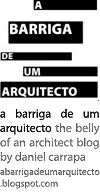The tyranny of common sense: Ken Robinson on TED
Published Tuesday, May 25, 2010.What’s there to say, really? It’s Ken Robinson. I personally love the man and vow to publish every presentation he delivers on TED for as long as I have a blog. He’s very funny but he delves into very serious issues. In this latest talk Ken Robinson makes the case for a radical change in the way we approach education and towards a greater sense of pursuit for that which moves us in life. Make sure to watch his outstanding TEDTalks – Ken Robinson says schools kill creativity and Bring on the learning revolution! – and don’t miss his previous presentation at the Hammer Lectures where he developed many of these ideas.
Ears to the wind
Published Monday, May 24, 2010.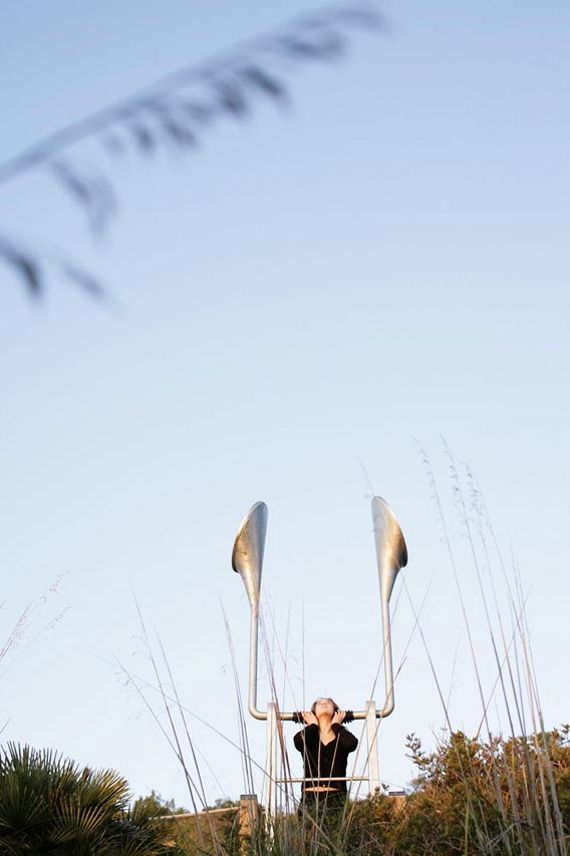
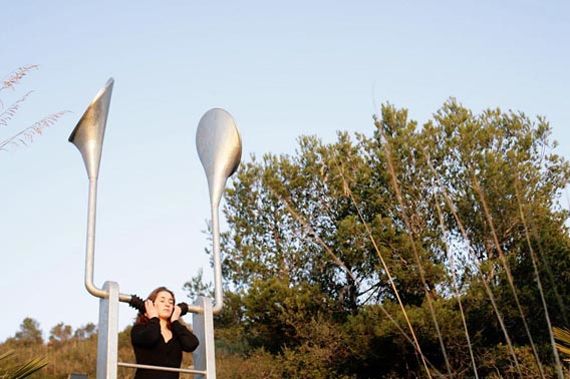
What a beautiful example of design motivated by the will to explore and interact with the natural environment. Inclusive Studio’s intervention on the austere landscape of the Parc Natural del Garraf in Cataluña is guided by principles of accessibility, delivering a path of sensorial discovery. The outstanding sound capturing trumpets reveal the echoes of the mountain, the frogs and the crickets, the wind in the trees. The touching wheels invite to discover the texture of the branches and the surface of the rocks. Don’t miss Inclusive Studio’s website for this and other projects. Via Edgar Gonzalez.
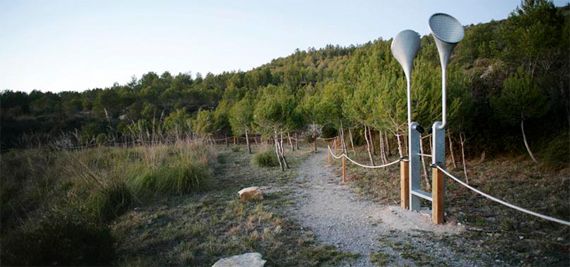

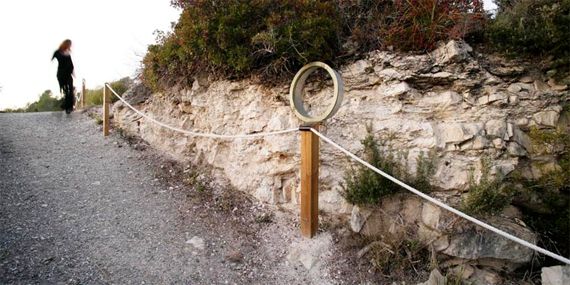
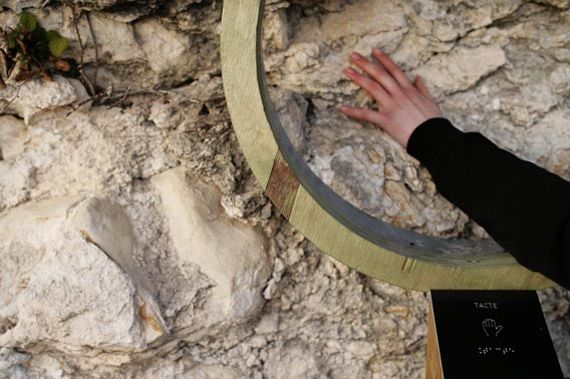
Rethinking city streets
Published Friday, May 21, 2010.
It’s time to make our streets safer for everyone, purple creatures included.
The United States may be one the most motorized societies in the world but it is also witnessing a profound cultural transformation regarding the way city planners deal with the issue of transportation and its consequences on urban planning and street design. Streetfilms is a good starting place to discover many case-studies and good practice examples on a wide array of topics such as traffic calming , car-free design and pedestrian safety.

One of its latest videos – Fixing the Great Mistake: Autocentric Development – reveals the historical consequences of the implementation of wide roadways in New York in the first half of the 20th century. In the 1930’s and 40’s, virtually all major car lanes in the city were widened and the public sidewalks become greatly reduced, raising heated reactions from local residents.
Currently, the public administration is promoting a series of strategies to correct the mistakes inherited from decades of auto-centric development, to reclaim public space and improve the quality of life of its inhabitants. The revision of Times Square and the expansion of NYC’s Bike Network are the most visible projects of this undergoing urban design revolution.

San Francisco’s Pavement to Parks proposal is another interesting initiative – see People, Parklets, and Pavement to Parks. This urban program is promoting the conversion of parking areas into outdoor public spaces and cafes as an attempt to support commerce and social life in the local community.

The city of San Francisco has been developing a long-term plan towards sustainable mobility since 2006. The Better Streets Plan is a remarkable example of systematic codification of street typologies and urban practices. Its aim is to promote sustainable habits regarding transport in the urban neighborhood, establishing new forms of street design that invite multiple uses, including safe, active and ample spaces for pedestrians, bicycles and public transit. Access the Better Streets documentation page and download the plan draft to find more about it.
Landscape of audacity
Published Wednesday, May 19, 2010.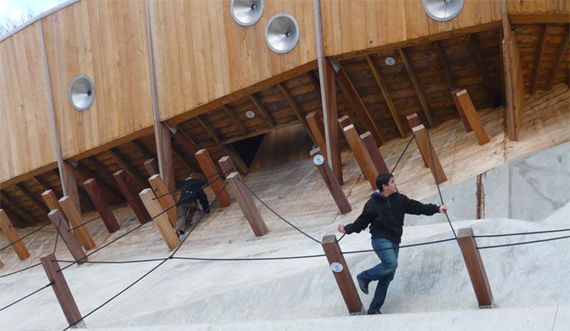
Belleville Park Playground, Paris. Image credits: BASE.
I remember seeing some images of this project over a year ago, most likely right here on the internet, but I missed to save any reference to it and was unable to find it afterwards, to my utter disappointment. Fortunately it’s been receiving renewed attention lately, most noticeably on landscape blogs such as Pruned, and I couldn’t resist making a mention to it as well.
The playground of the Belleville Park in Paris, designed by French based landscape studio BASE, presents an imaginative approach to the concept of recreational area. The «playhouse», as it is called by the authors, is developed over a high-pitched slope; a place we could find unusual for such public facility. It brings forth the notion of spontaneous structure, a place of adventure that resonates with the children’s capacity for imagination and experimentation as they interact with the built environment. The playground retains a sense of abstraction that allows for interpretation and discovery, mixing different structures and materials to create a free-flowing and powerful landscape.
In the face of such admirable approach, one has to wonder if the design of children’s playgrounds isn’t often confined by intricate regulatory requirements that limit imagination and innovation. For that reason, one has to praise the local authorities for carrying the audacity that nurtured this remarkable project. More images to see after the jump. Click to expand. [+/-]






ENGLISH EDITION
The English-only edition of the blog A Barriga de um Arquitecto is no longer being updated. Please visit the main page to access new content, additional information and links.
ARCHIVES | ARQUIVO
September 2008 October 2008 November 2008 December 2008 January 2009 February 2009 March 2009 April 2009 May 2009 June 2009 July 2009 August 2009 September 2009 October 2009 November 2009 December 2009 January 2010 February 2010 March 2010 April 2010 May 2010 June 2010 July 2010 August 2010 November 2010 January 2011 February 2011 March 2011 June 2011 July 2011 October 2011 December 2011
